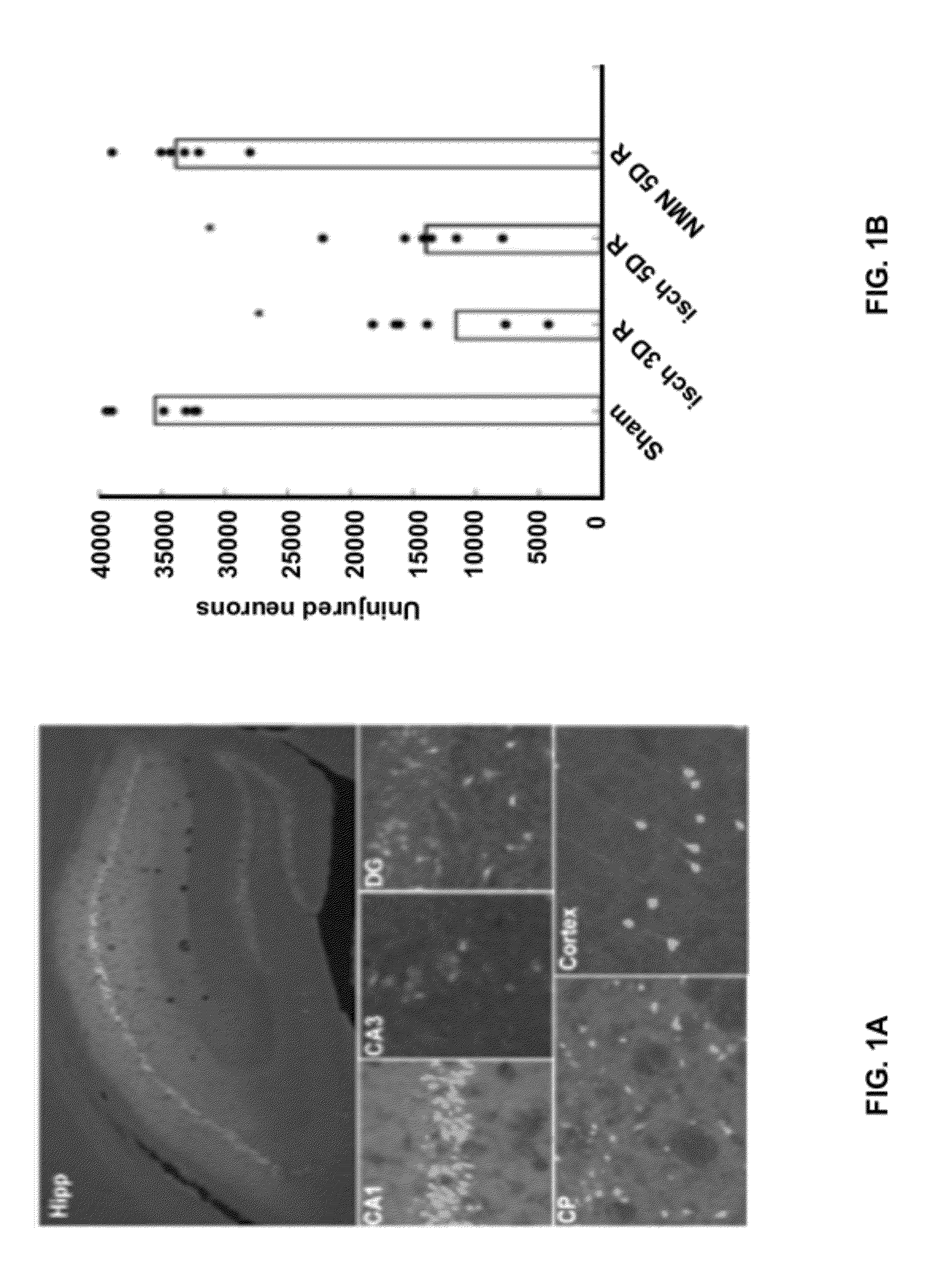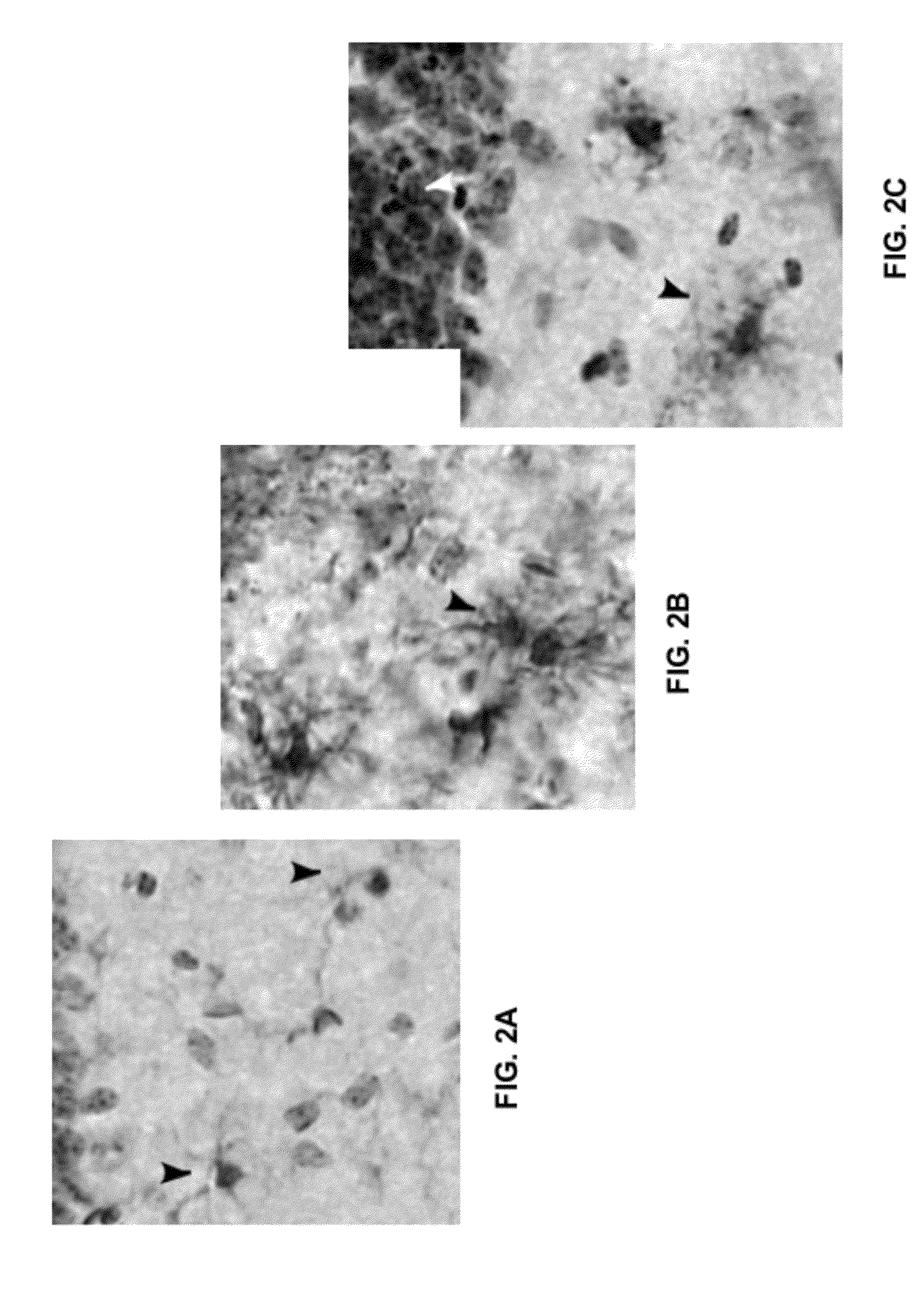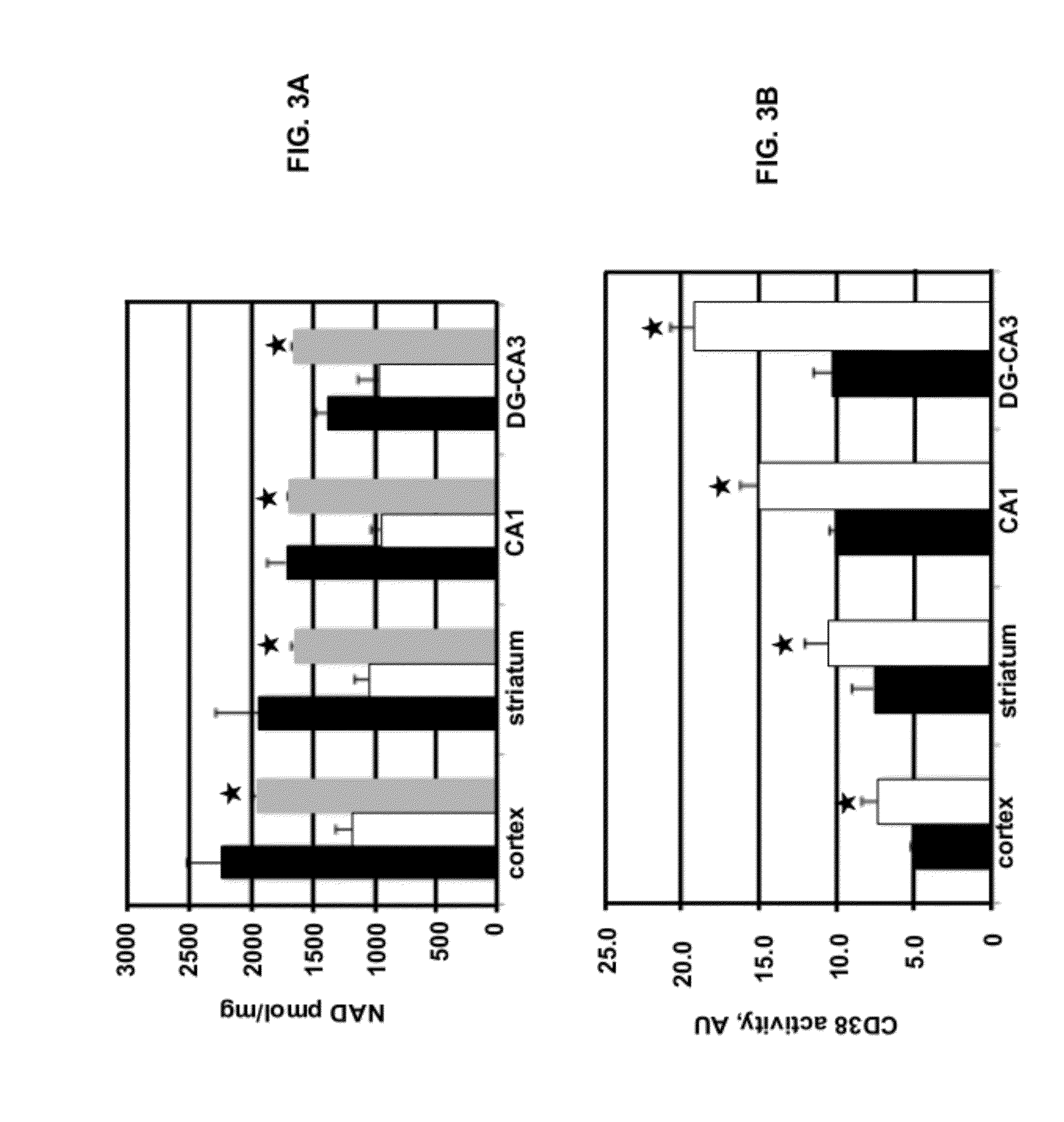Modulation of Nad+ Activity in Neuropathophysiological Conditions and Uses Thereof
a neuropathophysiological disease and nad+ activity technology, applied in the field of neuropathophysiology and pharmacotherapy of neuropathophysiologic diseases and conditions, can solve the problems of ineffective therapeutic approach to inhibit or at least reduce the chronic pathophysiology following traumatic brain injury, poor outcome following brain ischemia, and inability to fully understand the mechanisms leading to poor outcome. , the clinical significance of persistent microglial activation remains uncertain, and the effect of reducing the number o
- Summary
- Abstract
- Description
- Claims
- Application Information
AI Technical Summary
Benefits of technology
Problems solved by technology
Method used
Image
Examples
example 1
Forebrain Ischemia Model
[0041]C57BL / 6 male mice, weighing 20-25 g were used. Mice were fasted overnight with free access to water ad libitum. Animals were anesthetized with 3.5% isoflurane in 70% N2O and 30% O2 and the trachea were intubated with a 20-guage intravenous catheter. Anesthesia was maintained using 1.5% isoflurane in N2O:O2 (70:30) and the lungs were mechanically ventilated at a rate of 120 breaths per min and the tidal volume was adjusted to give normal physiological values of blood gases (34-38 mm Hg pCO2 and 10-120 mm Hg of pO2). The common carotid arteries was isolated via a neck incision and encircled with loose ligatures for later clamping. Rectal temperature was routinely monitored before, during and after ischemia. A subcutaneous needle thermistor was placed adjacent to the skull. The body and head temperature was maintained at 37.0±0.5° C. by a homeothermic-heating pad and heating lamp.
[0042]Two minutes before the common carotid arteries are clamped, the isoflur...
example 2
Stereologic Quantifications
[0043]Every sixth 30 mm-thick section located between 1.7 and 2.6 mm posterior to bregma (0 mm, 180 mm, 360 mm, 540 mm, 720 mm, 900 mm; 6 sections), which comprises the dorsal hippocampus, was stained with IBA1 antiserum and cresyl violet and used for estimating the total microglial number with distinct morphology and neuronal numbers of normal and dying neurons in the different hippocampal regions. Microglial cells were classified into three categories, based on visual inspection. Parallel sections were immuno-stained with GFAP antibody and the number of distinct astrocytes were counted in the same hippocampal area. GFAP-immunoreactive cells were classified into three categories: normal, moderate, and intensely activated astrocytes, based on morphological characteristics as assessed by visual inspection (23).
[0044]Quantitative analysis is performed on a computer-assisted image analysis system consisting of a Nikon Eclipse 800 photomicroscope equipped with...
example 3
[0045]Neurologic outcome
[0046]Following recovery intervals of 3 and 7 days, the mice were subjected to a neurologic examination designed to detect motor and cognitive deficits (23). Three different tests for motor deficiency were used. The first tests the ability of the mouse to hold onto a screen after being rotated from a horizontal to a vertical position. The next test evaluates the amount of time that the mouse can remain balanced on a horizontal rod. Lastly, the mouse undergoes a prehensile traction test by timing the period that it can cling to a horizontal rope. All three tests were scored, and the sum of these scores represents the motor ability of individual animals.
PUM
| Property | Measurement | Unit |
|---|---|---|
| Dimensionless property | aaaaa | aaaaa |
| Dimensionless property | aaaaa | aaaaa |
Abstract
Description
Claims
Application Information
 Login to View More
Login to View More - R&D
- Intellectual Property
- Life Sciences
- Materials
- Tech Scout
- Unparalleled Data Quality
- Higher Quality Content
- 60% Fewer Hallucinations
Browse by: Latest US Patents, China's latest patents, Technical Efficacy Thesaurus, Application Domain, Technology Topic, Popular Technical Reports.
© 2025 PatSnap. All rights reserved.Legal|Privacy policy|Modern Slavery Act Transparency Statement|Sitemap|About US| Contact US: help@patsnap.com



